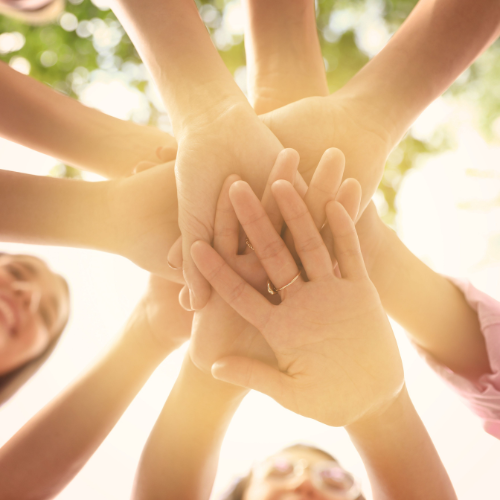Domestic violence is a cycle that can affect not only the immediate victim but also future generations. Breaking this cycle and ensuring long-term healing is a challenging, yet achievable goal. Survivors need practical tools to heal from the trauma of abuse, rebuild their lives, and prevent future violence. In this article, we’ll explore effective strategies for long-term healing, prevention, and how individuals, communities, and society can work together to stop the cycle of abuse for good.
Understanding the Cycle of Domestic Violence
The cycle of domestic violence is typically characterized by a repeating pattern of behaviour, including periods of tension building, violent outbursts, and reconciliation or calm. This cycle can make it difficult for victims to leave, as the “honeymoon” phase following abuse may create false hope that the violence will stop.
The Stages of the Cycle
- Tension Building: Tensions rise, communication breaks down, and the abuser begins to feel agitated.
- Acute Violence: The abuser lashes out, inflicting physical, emotional, or psychological abuse on the victim.
- Reconciliation: The abuser may apologize, make excuses, or promise that it will never happen again, often referred to as the “honeymoon” phase.
- Calm: Things seem normal for a period, but eventually, the cycle starts again.
To truly break this cycle, both survivors and society must adopt a multi-faceted approach that focuses on healing, prevention, and empowerment.
Strategies for Long-Term Healing

Breaking free from domestic violence is just the first step. True recovery requires long-term healing strategies that address the emotional, physical, and psychological impact of the abuse. Survivors need to rebuild their lives, redefine their self-worth, and develop tools for emotional resilience.
1. Seek Professional Support
One of the most critical steps in long-term healing is accessing professional support, such as therapy or counselling. Trauma-informed therapy helps survivors understand the impact of their experiences and offers coping strategies for emotional recovery.
Types of Therapy for Healing:
– Cognitive Behavioural Therapy (CBT): This form of therapy focuses on changing negative thought patterns and behaviours that may have developed as a result of the abuse.
– Eye Movement Desensitization and Reprocessing (EMDR): EMDR is effective for processing traumatic memories and reducing their emotional impact.
– Group Therapy: Support groups for domestic violence survivors provide a safe environment for sharing experiences, gaining mutual support, and learning from others.
2. Rebuilding Self-Esteem and Confidence
Abuse often erodes self-esteem and self-worth. Survivors need to focus on rebuilding their confidence, learning to trust themselves, and recognizing their inner strength. This can be done through:
– Positive Affirmations: Regularly practice affirmations that reinforce self-worth and resilience.
– Setting Achievable Goals: Accomplishing small goals helps rebuild confidence and a sense of control.
– Engaging in Hobbies: Rediscovering passions and engaging in creative or physical activities can boost self-esteem and provide a sense of fulfillment.
3. Establishing Healthy Boundaries
Survivors of domestic violence often struggle with setting and maintaining boundaries. Part of long-term healing involves learning how to create healthy boundaries in all relationships. This helps survivors protect their emotional and physical well-being while ensuring that future relationships are built on mutual respect.
4. Practicing Self-Care and Mindfulness
Self-care plays a vital role in healing. Survivors should prioritize activities that nurture their physical, emotional, and mental health. Mindfulness practices, such as meditation, deep breathing, and journaling, can help survivors stay grounded, reduce anxiety, and process their emotions in a healthy way.
Strategies for Preventing Domestic Violence

While healing is a personal journey for survivors, preventing domestic violence on a broader scale requires societal efforts. Education, awareness, and community involvement are key to breaking the cycle of abuse for good.
1. Education and Awareness
One of the most powerful tools in preventing domestic violence is education. Teaching individuals, particularly young people, about healthy relationships, respect, and communication helps stop abuse before it begins.
Key Areas of Focus:
– Consent and Boundaries: Teaching young people about the importance of consent and respecting personal boundaries can reduce future instances of abuse.
– Healthy Communication: Educating individuals on how to communicate effectively in relationships can help prevent misunderstandings and avoid abusive behaviour.
– Gender Equality: Challenging harmful gender stereotypes and promoting equality helps dismantle the power dynamics that often fuel domestic violence.
2. Community Support Systems
Communities play a crucial role in preventing domestic violence. By creating a culture of support and accountability, communities can help victims feel safe and empowered to seek help.
Community Initiatives:
– Hotlines and Shelters: Ensure that survivors have access to 24/7 hotlines, emergency shelters, and counselling services.
– Bystander Training: Teach community members how to safely intervene when they witness domestic violence, offering support to victims and helping prevent further harm.
– Support Networks: Encourage the development of local support groups where survivors can connect with others who have experienced similar situations, shared resources, and build a sense of solidarity.
3. Legal Protections and Advocacy
Legal reforms are critical in preventing domestic violence. Ensuring that victims have access to protection orders, legal aid, and swift judicial action can deter abusers and protect survivors.
Key Legal Protections:
– Restraining Orders: Strengthening laws related to restraining orders can prevent abusers from contacting or approaching their victims.
– Workplace Protections: Advocate for policies that provide domestic violence survivors with workplace protections, such as paid leave and job security, while they navigate their recovery.
– Criminal Justice Reform: Ensure that abusers are held accountable through appropriate legal measures, including prosecution and sentencing.
The Role of Empowerment in Long-Term Healing

Empowerment is at the core of both healing and prevention. For survivors, feeling empowered means taking control of their own lives, making informed decisions, and embracing their strength and resilience.
1. Developing Independence
Many survivors of domestic violence face financial abuse or isolation, which can make it difficult to leave an abusive relationship or rebuild after escaping. Fostering independence is a key part of breaking the cycle and ensuring long-term healing.
Steps to Build Independence:
– Financial Literacy: Offer financial literacy programs to teach survivors how to manage their finances, budget, and save for the future.
– Job Training: Providing access to job training and employment opportunities can help survivors become self-sufficient and reduce reliance on abusive partners.
– Safe Housing: Secure, affordable housing options are essential for survivors seeking to rebuild their lives without fear of homelessness or financial instability.
Encouraging Advocacy and Leadership
Survivors of domestic violence often become powerful advocates for change. Encouraging survivors to share their stories, participate in advocacy efforts, or lead community initiatives can empower them to make a difference in the lives of others while furthering their own healing.
Opportunities for Advocacy:
– Public Speaking: Survivors can use their experiences to educate others, raise awareness, and advocate for policy changes that support domestic violence prevention.
– Support Group Facilitation: Leading support groups allows survivors to offer guidance and empathy to others who are just beginning their healing journey.
– Community Outreach: By getting involved in outreach programs, survivors can help others in their community access the resources and support they need to escape abusive situations.
FAQs
FAQ
What are the long-term effects of domestic violence on survivors?
Long-term effects of domestic violence can include PTSD, depression, anxiety, low self-esteem, and trust issues. Survivors may also face financial challenges and difficulty forming healthy relationships. However, with the right support and resources, long-term healing is possible.
How can I support someone who is healing from domestic violence?
Supporting a survivor involves offering empathy, listening without judgment, respecting their boundaries, and providing practical assistance when needed. Encouraging them to seek professional help and connecting them with resources, such as therapy or support groups, is also crucial.
What can communities do to prevent domestic violence?
Communities can prevent domestic violence by raising awareness, offering education about healthy relationships, providing accessible resources for survivors, and fostering a culture of accountability. Initiatives like bystander training, support groups, and legal reforms play a vital role in creating safer communities.

Breaking the cycle of domestic violence requires both individual and collective efforts. For survivors, long-term healing is a journey of emotional recovery, rebuilding self-esteem, and finding empowerment. For society, prevention involves education, community support, and legal protections that ensure safety and justice for survivors.
At Healing Through Love, we believe that everyone deserves to live free from violence and fear. By providing resources, support, and advocacy, we can empower survivors to heal, break the cycle of abuse, and create a future filled with hope, strength, and resilience.
Breaking the cycle of domestic violence is not only about survival—it’s about thriving


